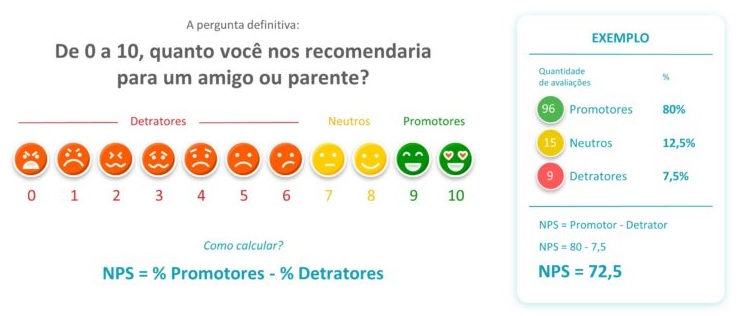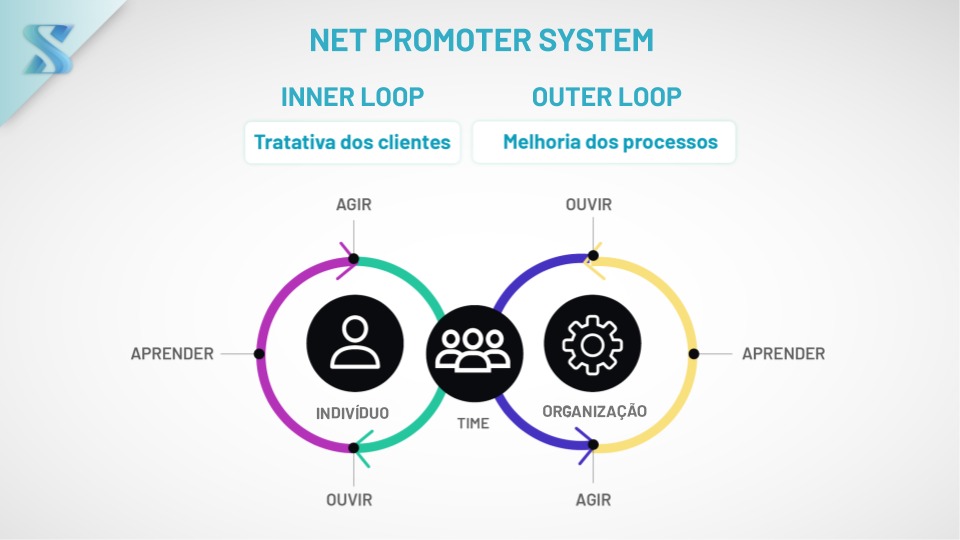Recently I was asked by a manager of a large hospital about why the NPS calculation does not consider neutrals, and what to do with them after all?
The doubt raised several questions and internal debates in our team, and I decided to go deep and research content, articles, and interview professionals and customers about the ideal approach to patients or neutral customers.
I take advantage of this article to bring you some insights, and also four tips that will help you convert neutrals into promoters.
Let’s start at the beginning. What is NPS?
In a very didactic, simple and objective way. NPS (Net Promoter Score) is a metric created to monitor customer and patient satisfaction and loyalty with a brand, product, or service. We talk in more detail about what NPS is in this article.


Created by Fred Reichheld and initially published in 2003 in the article The One Number You Need to Grow, edited in the book The Ultimate Question, and later deepened together with Rob Markey in the book The Ultimate Question 2.0.
Basically, the NPS is obtained through the Ultimate Question that gives the books their name:

Based on the score indicated by the respondent, the segmentation is made into three groups: Detractors (scores from 0 to 6), Neutrals (scores 7 and 8) and Promoters (scores 9 and 10).
The main objective of doing this segmentation to obtain a satisfaction indicator is to understand the “BALANCE” between customers who promote the brand (Promoters), and customers who are dissatisfied and who naturally speak ill of the brand to other people (Detractors).
This is important, because in the studies carried out by Fred, the only customers really likely to recommend the company naturally, and do the famous “word-of-mouth”, were those with grades 9 and 10, that is. The promoters!
However, the effort of promoting customers is partially or totally destroyed when there are dissatisfied customers who speak ill of the brand, that is. The detractors!
Exemplo prático: Clientes promotores = 1 (50%) Clientes neutros = 0 (0%) Clientes detratores = 1 (50%) Promotores - Detratores = SALDO de Promotores 1 - 1 = 0 (0%)

But what about neutrals, why don’t they enter the calculation?
It is a group that buys only what it needs and nothing more. They are passively satisfied, non-loyal customers with a very different set of attitudes and behaviors. They hardly make recommendations, and when they do, they are with reservations and without enthusiasm, that is, they do not feel delighted about the service or the experience lived.
Thus, it made no sense to include neutrals in the calculation to arrive at the “BALANCE” of customers who promote your brand. For neutrals neither promote nor destroy.
Exemplo prático incluindo os neutros na equação: Clientes promotores = 1 (33%) Clientes neutros = 1 (33%) Clientes detratores = 1 (33%) Promotores - Detratores = SALDO Promotores 1 - 1 = 0 (0%)
The weight of each group in the NPS and the importance of the treatment
First, if we analyze the scale of possibilities for the answer to the definitive question, we see that the detractors have the highest weight among the three groups, with seven possibilities (0 to 6), followed by two possible scores for the neutrals (7 and 8) and two for the promoters (9 and 10). But why is that?
At a certain point in the explanation, Fred considers the NPS conservative. After all, detractor customers often talk about the bad experience in greater volume than promoters. Therefore, the weight of the detractors already reflects their importance in relation to the urgency in understanding and dealing with the problem they experienced in the experience with your company.
If you want to delve deeper into this topic, we held a Webinar on Patient Treatment, and invited experts on the subject to give an insight into the importance of treatment. The content can be viewed here.

Bringing the topic to the reality of the market
To better understand how the topic is treated by market professionals, and to help me enrich the content of this article, nothing better than real ‘cases’ applied in practice.
I talked to Débora Tineo, customer experience and service manager at the holding company Athena Saúde, which uses NPS to monitor the experience of its patients.
“Obviously our main focus is the detractor, but as our volume of detractors has been decreasing, we are also managing to approach the neutrals to understand the reason for the note, and if there is any dissatisfaction. Our job with neutrals is to get in touch to build loyalty and make them become promoters at the next opportunity”
And in the scale of priorities, he reiterated:
- Detractor
- Neutral
- Promoter
In other words, the neutral customer or patient is the one who needs to experience or experience something incredible to become a promoter in the next experience with your company. That is why it is important to know your feelings. To seek insights on how to enchant him definitively.
Remembering that Athena Saúde is already in a more advanced phase regarding patient treatment and the use of NPS as a metric for monitoring satisfaction and improving processes.
Therefore, as Débora herself reiterated, the priority will always be dealing with detractors, and that the second step is to move towards the enchantment of neutrals so that they become promoters.

Now that we understand a little more about neutrals, and how they influence our NPS, I’ve separated some tips that you’ll like.
4 tips to convert neutrals into promoters
Tip 1: Include the satisfaction survey as part of your customer’s journey.
The satisfaction survey is an essential tool for continuously monitoring your customers’ feelings, opinions, suggestions, and criticisms.
When it comes to neutrals, it is essential to understand why they did not leave delighted to the point of giving grades 9 or 10.
Invest in a tool that, in addition to segmenting the three NPS groups, brings insights from comments, and evaluations of all points of their journey in the experience with your brand or product.
It is this information that will indicate where exactly your company is going wrong or getting it right.
Tip 2: Reduce friction between your company and your customer
Who likes to answer long and tiring surveys?
Nobody!
Invest in quick surveys with as little friction as possible, which bring insights using artificial intelligence and dynamic data analysis to decrease survey time and improve engagement.
There is no point in improving your customer’s experience with a survey that generates a bad experience.
Tip 3: Closing the Loop: Aim to treat 100% of your customers or patients
As Fred Reichheld himself has already taught us in the book The Ultimate Question, invest in closing the cycle and dealing properly, prioritizing the detractors, then the neutrals.
It is this direct contact with the customer that will make you understand exactly what the real problem or motivation for their bad experience was.
Try to charm him, showing that you care about his opinion, and are willing to solve the problems that may have occurred and receive suggestions for improvement.
Tip 4: Improve your processes based on the voice of your customer
It is essential to put the voice of the customer in the company’s culture, starting with top management and reaching the employee.
Based on these opinions, you will be able to correct processes and products, to delight and provide the best possible experience.
The voice of the customer is the best way to a customer-centric or patient-centric culture.
Extra tip: We address several issues related to this topic in our Webinars with experts and guests market references, access here, and see all editions.
What did you think of this article? I would like to hear your opinion on this subject, and what is your view on dealing with neutral clients and patients. Use the field below to comment. Thank you, see you in the next article. : )
Alex Pereira is Content and Communication Coordinator at SoluCX









